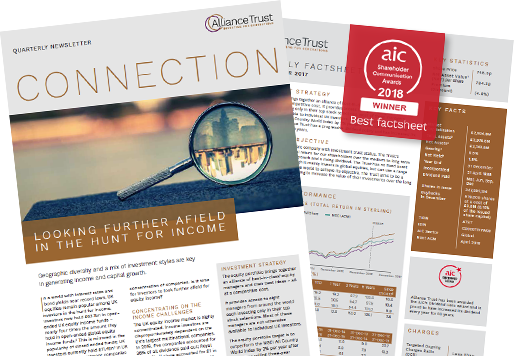Abnormal year for value stocks
Over the years we expect to see periods when certain styles or trends fall out of favour within the wider market. Since the financial crisis, for example, value investors – those that invest in quality companies trading at a price lower than their value – have generally experienced a particularly tough time.
It is not unusual for a particular investment style to occasionally fall out of kilter and it is near impossible to predict when the cycle will turn either way, which is why the Alliance Trust portfolio is positioned to balance out any bias towards a particular style. By having a broadly neutral weighting to both the value and growth investment style, we are well-positioned to capture outperformance when markets turn as well as reduce the impact when one inevitably underperforms the other.
In 2018 the performance of value stood out for the abnormal and overblown way stocks were punished when global equities stumbled.
Following an unnerving period of calm in 2017, the return of volatility to markets saw value stocks – defined here as those with a low price-to-earnings (P/E) ratio – experience their worst year of underperformance in two decades.
This negative bias against value stocks was not reflected across the broader market, and showed no regard for the fundamental performance of the companies themselves. It was also completely contrary to historical norms over the past 20 years. This tough time for the value stock pickers in the Alliance Trust group of managers was ultimately reflected in the underperformance of the wider portfolio over the 12-month period.
While performance has bounced back in the early months of 2019, with most if not all of the losses regained, the unusual reaction to value stocks in 2018 was one we felt worth exploring.
An analysis of last year’s market showed that it was the worst year for the relative performance of low P/E stocks since the internet bubble burst in the late nineties. In the US the cheapest quintile of stocks by P/E was down -15.2% for the year, 10.8 percentage points worse than the S&P 500 which fell -4.4% according to FactSet data.
This stands in stark contrast to what is considered the ‘norm’. Between 1998 and 2017 the cheapest quintile by P/E had an annualised return of 11.9%, 4.7 percentage points better than the S&P 500 which returned 7.2%.
Value stocks hit hardest.
The extreme negative reaction to stocks in 2018 was a phenomenon that largely affected the broad range of low P/E shares while leaving the rest of the market relatively unscathed. This was evident when we looked at the market reactions following a significant company earnings revision. The average relative reaction to a share revealing significant earnings revisions was a positive uptick of around 6% across the general market. However, for the lowest P/E stocks the average reaction was a loss of some 17%.
It is clear that the stock market had a severe negative bias against value stocks in 2018, regardless of company fundamentals and contrary to historical norms. When a value manager experiences such a market it can be, and has been, too much of a headwind for the stock selection process to overcome in the short run.
There is, however, reason to be more optimistic as we settle into 2019.
Following the collapse of the internet bubble – an event that sparked two of the worst years for value stocks in 1998 and 1999 – low P/E stocks went on a glorious run for the next 14 years. The style outperformed the S&P 500 in every year except two, 2008 and 2011, and even in those years the underperformance was not severe.
What we see today is very encouraging based on the history we know. While we cannot predict when the market will turn, we believe we could perhaps be close to the end of a value downcycle, and at worst in the middle. Either way this should be a fantastic entry point.
So far, every period of dismal value stock performance has been followed by long periods of strong value stock performance, with the very best periods being the ones that followed the very worst. While history can be no guarantee of future movements, we do not expect that this unprecedented run of growth stocks over value is a dynamic that will continue in perpetuity.






